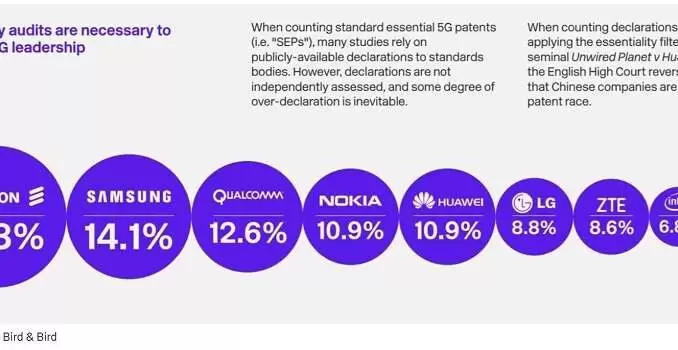
Views: 32
– Investments in cutting-edge technologies define the future of commercial dominance and geopolitics, the technological performance of 5G technology ensures an exponentially expanding market already underway.
Minapim by Hernan Valenzuela: Leadership in 5G patents could define the market leaders. Half of the world’s data volume will be generated by vehicles, sensors and communication devices, and not by personal devices, according to forecasts. The volume of data generated by new devices continues to increase exponentially.
Ericsson, the Swedish telecommunications equipment manufacturer, concludes that “it is impossible to analyze the real 5G patent landscape at this time, as a substantial part of patent applications recently filed during 5G development have not yet been granted and many related applications to 5G are not yet publicly available for review.”
A comprehensive patent-by-patent analysis for portfolio evaluation purposes, therefore, can only be done when the bulk of the patents that are potentially essential for 5G have been granted, which is expected to happen several years from now.
Why You Shouldn’t Believe Everything You Read About 5G Patents
Some reports on 5G patents point to Chinese companies as having a lead in the number of patents held, giving the impression that China is ahead when it comes to 5G development. But a closer look at the data shows that there is another story.
Studies analyzing 5G patents count the number of patents declared to ETSI as essential for 5G. However, the claims are not independently evaluated and it can be difficult to determine whether a patent is actually “essential to” or merely “related to” 5G.
5G transmission
Ericsson predicts that worldwide data traffic will increase 500% to 136 exabytes per month over the next five years, compared to today’s volume. A typical end user can generate up to 1.5 gigabytes of data/day and a vehicle up to 4 terabytes or more.
Under 3GPP, 5G offered significantly higher data rates (100 times higher than 4G / LTE), allowing latency times in the millisecond range and providing significantly higher network availability and reliability. However, the growing demand for end devices, combined with the explosion in the volume of data exchanged and the urgent need for minimum latency times, place demands that 5G technology alone may not be able to meet.
Connectivity standards are subject to thousands of patents and, in some cases, these patents demand innovation regarding standardized technology. These patents are known as SEPs standard essential patents.
Companies that define and specify technologies like 5G or Wi-Fi and that hold essential patents for such technologies will be among the technology leaders in a soon-to-be fully connected world. To gain a better understanding of the landscape of patents, SEPs, and standards contributions to cutting-edge computing technologies.
The market for the new super-fast 5G mobile communications standard is heated by the expectation of gigantic global growth forecast to nearly $670 billion by 2026. Another impacting factor is the adoption of 5G technology across the industry in retail and manufacturing , for these reasons market researchers expect 5G to become the technology whose growth reaches one billion users in just three years .
It is for this reason that network equipment providers are in wide rivalry for the best positions in the market, and trying to keep their competitors at bay, mainly with patents for technological innovations. Ericsson, Huawei, Nokia, Qualcomm and Samsung are the leaders on 5G patents.
In the US market, Western mobile operators are looking to remove Huawei from their installed networks and change Chinese manufacturers in the new 5G Network operations.
Vodafone announced a five-year contract with Ericsson; Telefónica and Deutsche Telekom also opted for technologies from Europe to be used in their networks.
Related article: Using 5G ABB and Ericsson pave the way for digitization in industries
Leave a Reply